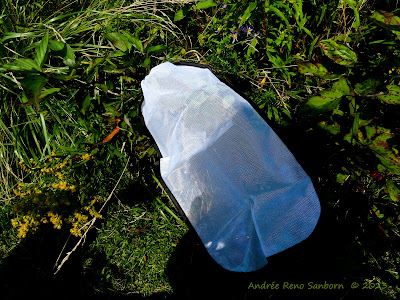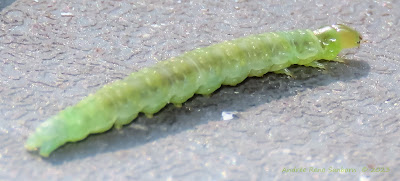 |
| Jody's bubbling masked bee photo |
I re-downloaded iMovie to my iPad the other day for nature videos. I had purchased it years ago but never used it. I had found a black scavenger fly. They are very, very small. They have heads like ants but eyes like flies. They also seem to dance on leaves because they continuously open and close their wings. When I got my shots into the iPad (which I now do with my new, streamlined Lightroom-free workflow), I found the fly had been blowing bubbles. Why?
Jody had found a solitary masked bee blowing bubbles that week, also. We learned that solitary bees, being more primitive than social bees, cannot digest pollen as the social bees do. So they make the pollen more digestible with bubbling. But not flies.
Nobody agrees why flies blow bubbles. It isn't just scavenger flies that do it: just about all species of flies bubble. At least that is what I gather from my reading.
There are three explanations for fly bubbles:
- to disperse pheromones
- to dehydrate dilute food
- to cool down
I expect research will settle on one explanation sooner or later.
I decided to make a video of this one individual fly blowing bubbles. And I decided to make a "real" movie with iMovie. It took hours to re-learn the software, pick the appropriate music and make title boards. I was so immersed in the project that I lost sight of the nature of the beast. Literally. This was to be a nature video and I now feel that I made it ridiculously frilly. However, I'm too busy dealing with flash flood issues and my so-called normal activities and I don't feel like re-doing it. So here is my frilly bubbly fly video. By the way, I never truly finished the video to what I wanted it to be. 😳
00:01:04
Resources:
- "BEE-havior: The “Bubble” Bee—Hylaeus"
- "Flies blowing bubbles"
- "Structural Differences in the Digestive Tract Between Females and Males Could Modulate Regurgitation Behavior in Anastrepha ludens (Diptera: Tephritidae)"
- "A bubble-blowing fly"
- "Backyard curiosities 1: Bubble-blowing flies"
- "Flies as pollinators and bubble-blowers"
_/\_/\_



















.jpg)

.jpg)







%20(1).jpg)
.jpg)
.jpg)
.jpg)
.jpg)
.jpg)
_edited.jpg)

%20(6).jpg)
%20(8).jpg)
%20(3)%202_edited.jpg)
%20(2).jpg)



